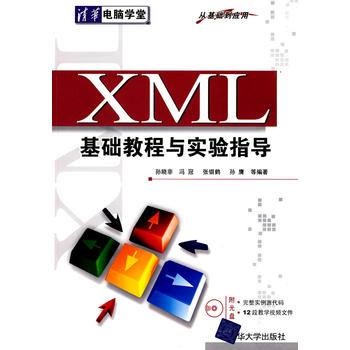7 recommended articles about Xstream
This article mainly introduces the method of Javabean to convert XML documents based on the The xstream package implements the method of converting XML documents. Share it with everyone for your reference, the details are as follows: 1. Required Jar package: xpp3_min.jarxstream.jar download address of this website. Add these two jars to the project 2. Add two javabeans for testing: Province and Cityclass Province
{
private String name;//province name
private List
1. XML document conversion method implemented in Javabean based on xstream package

Introduction: This article mainly introduces the Javabean method of converting XML documents based on the xstream package, and analyzes the use of the xstream package to convert xml files based on specific examples. For specific usage skills, friends in need can refer to
2. XStream code example for implementing Bean and xml mutual conversion

Introduction: 2. Important annotations @XStreamAlias Define the alias @XStreamAsAttribute Define it as an attribute @XStreamOmitField Ignore @XStreamConverter Process date format @XStreamImplicit(itemFieldName = "roles" ) Processing List
3. A powerful tool for converting JAVAbean and XML-XStream code details

Introduction: XStream is an open source project under the famous thought works. Its main function is to provide conversion between Java beans and XML text. It also provides conversion between JAVA beans and JSON. Conversion is beyond the scope of this discussion.
4. XML overview and sample code for Pull parsing

##Introduction: Overview of XML and detailed explanation of Pull parsing ONE Goal, ONE Passion! Most Android development is done with json. And Xstream is used to parse xml. Slowly, manual parsing of xml is almost forgotten. Overview: XML What is it? eXtensible Markup Language (Extensible Markup Language); Common functions of XML: 1. Used as configuration file 2. Data format during data transmission 3. Basic syntax of resource file XML in Android: 1. Sound
5. Detailed explanation of the sample code of xml parsing tool kit Xstream

Introduction: Simplified API; No mapping files; High performance, low memory usage; Clean XML; No need to modify objects, supports internal private fields; No need for setter/getter methods, final fields; Provides serialization interface; Custom conversion Type strategy; Detailed error diagnosis;
6. upstream module sodastream hdstream axstream
Introduction: stream: upstream Module: upstream module (100%) nginx modules are generally divided into three major categories: handler, filter and upstream. In the previous chapters, readers have already learned about handlers and filters. Using these two types of modules, nginx can easily complete any stand-alone work. The upstream introduced in this chapter will enable nginx to transcend the limitations of a single machine and complete the reception, processing and forwarding of network data. The data forwarding function provides nginx with lateral processing capabilities across a single machine, freeing nginx from only being able to end up
Introduction: Explanation of ajax_xstream
[Related Q&A recommendations]:
Why shouldSerializeMember in Xstream should be implemented
android-studio - How to disable a Jar package in a Dependency in Android Studio?
java - Why shouldSerializeMember in Xstream should be implemented
The above is the detailed content of 7 recommended articles about Xstream. For more information, please follow other related articles on the PHP Chinese website!

Hot AI Tools

Undresser.AI Undress
AI-powered app for creating realistic nude photos

AI Clothes Remover
Online AI tool for removing clothes from photos.

Undress AI Tool
Undress images for free

Clothoff.io
AI clothes remover

Video Face Swap
Swap faces in any video effortlessly with our completely free AI face swap tool!

Hot Article

Hot Tools

Notepad++7.3.1
Easy-to-use and free code editor

SublimeText3 Chinese version
Chinese version, very easy to use

Zend Studio 13.0.1
Powerful PHP integrated development environment

Dreamweaver CS6
Visual web development tools

SublimeText3 Mac version
God-level code editing software (SublimeText3)

Hot Topics
 1663
1663
 14
14
 1420
1420
 52
52
 1315
1315
 25
25
 1266
1266
 29
29
 1239
1239
 24
24
 Securing Your XML/RSS Feeds: A Comprehensive Security Checklist
Apr 08, 2025 am 12:06 AM
Securing Your XML/RSS Feeds: A Comprehensive Security Checklist
Apr 08, 2025 am 12:06 AM
Methods to ensure the security of XML/RSSfeeds include: 1. Data verification, 2. Encrypted transmission, 3. Access control, 4. Logs and monitoring. These measures protect the integrity and confidentiality of data through network security protocols, data encryption algorithms and access control mechanisms.
 Is There an RSS Alternative Based on JSON?
Apr 10, 2025 am 09:31 AM
Is There an RSS Alternative Based on JSON?
Apr 10, 2025 am 09:31 AM
JSONFeed is a JSON-based RSS alternative that has its advantages simplicity and ease of use. 1) JSONFeed uses JSON format, which is easy to generate and parse. 2) It supports dynamic generation and is suitable for modern web development. 3) Using JSONFeed can improve content management efficiency and user experience.
 RSS Document Tools: Building, Validating, and Publishing Feeds
Apr 09, 2025 am 12:10 AM
RSS Document Tools: Building, Validating, and Publishing Feeds
Apr 09, 2025 am 12:10 AM
How to build, validate and publish RSSfeeds? 1. Build: Use Python scripts to generate RSSfeed, including title, link, description and release date. 2. Verification: Use FeedValidator.org or Python script to check whether RSSfeed complies with RSS2.0 standards. 3. Publish: Upload RSS files to the server, or use Flask to generate and publish RSSfeed dynamically. Through these steps, you can effectively manage and share content.
 From XML to Readable Content: Demystifying RSS Feeds
Apr 11, 2025 am 12:03 AM
From XML to Readable Content: Demystifying RSS Feeds
Apr 11, 2025 am 12:03 AM
RSSfeedsareXMLdocumentsusedforcontentaggregationanddistribution.Totransformthemintoreadablecontent:1)ParsetheXMLusinglibrarieslikefeedparserinPython.2)HandledifferentRSSversionsandpotentialparsingerrors.3)Transformthedataintouser-friendlyformatsliket
 XML's Advantages in RSS: A Technical Deep Dive
Apr 23, 2025 am 12:02 AM
XML's Advantages in RSS: A Technical Deep Dive
Apr 23, 2025 am 12:02 AM
XML has the advantages of structured data, scalability, cross-platform compatibility and parsing verification in RSS. 1) Structured data ensures consistency and reliability of content; 2) Scalability allows the addition of custom tags to suit content needs; 3) Cross-platform compatibility makes it work seamlessly on different devices; 4) Analytical and verification tools ensure the quality and integrity of the feed.
 Building Feeds with XML: A Hands-On Guide to RSS
Apr 14, 2025 am 12:17 AM
Building Feeds with XML: A Hands-On Guide to RSS
Apr 14, 2025 am 12:17 AM
The steps to build an RSSfeed using XML are as follows: 1. Create the root element and set the version; 2. Add the channel element and its basic information; 3. Add the entry element, including the title, link and description; 4. Convert the XML structure to a string and output it. With these steps, you can create a valid RSSfeed from scratch and enhance its functionality by adding additional elements such as release date and author information.
 RSS Documents: How They Deliver Your Favorite Content
Apr 15, 2025 am 12:01 AM
RSS Documents: How They Deliver Your Favorite Content
Apr 15, 2025 am 12:01 AM
RSS documents work by publishing content updates through XML files, and users subscribe and receive notifications through RSS readers. 1. Content publisher creates and updates RSS documents. 2. The RSS reader regularly accesses and parses XML files. 3. Users browse and read updated content. Example of usage: Subscribe to TechCrunch's RSS feed, just copy the link to the RSS reader.
 Decoding RSS: The XML Structure of Content Feeds
Apr 17, 2025 am 12:09 AM
Decoding RSS: The XML Structure of Content Feeds
Apr 17, 2025 am 12:09 AM
The XML structure of RSS includes: 1. XML declaration and RSS version, 2. Channel (Channel), 3. Item. These parts form the basis of RSS files, allowing users to obtain and process content information by parsing XML data.




